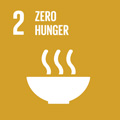- Docente: Giulia Tabanelli
- Credits: 6
- SSD: AGR/16
- Language: English
- Teaching Mode: In-person learning (entirely or partially)
- Campus: Bologna
- Corso: Second cycle degree programme (LM) in Food Safety and Food Risk Management (cod. 9140)
Learning outcomes
The main purpose of the course is to understand and discuss the role of the presence of microorganisms in food in relation to food safety, to critically apply some analytical approaches for risk assessment in different food type, to understand the factors involved in contamination, microbial adaptation and growth in relation to food safety. Moreover, the students will acquire the bases for the application of mathematical model and statistical procedures to the forecast of microbial growth or death kinetics in foods, also in relation to the application of process treatments in food industry.
Course contents
Basic knowledge of microorganisms and their potential interactions with the food-man-environment ecosystem
Contamination and risk of microbial growth in food: main control and management systems for the microbial growth in food production processes and in finished or ready to eat products
Complex microbial ecosystem organization and their adaptation and resistance characteristics; evaluation of the microbiological food shelf life
Predictive microbiology principles:
- Definitions, aims and development of predictive microbiology
- Primary models for microbial growth curves (Gompertz equation, Baranyi model, logistic equation).
- Microbial death curves: from the linear Bigelow equation to the description of nonlinear kinetics (loglinear model, Weibull equation, rate models at variable temperatures)
- Use of secondary models to evaluate the effect of the control factors and variables applied
- Probabilistic models, Logit equation.
Practical applications (case studies) of predictive microbiology in the research sector and in the food industry:
- Production of molecules with potential healthy or negative effects (toxins) and study of the factors that regulate their accumulation
- Factors influencing foodborne pathogens growth and survival in food
- Evaluation of the effects of antimicrobials and their influence on the growth kinetics and on death curves also in association with a thermal treatment.
- Microbial alterations of fresh or ready to eat foods and strategies for their stabilization: evaluation of shelf life.
Readings/Bibliography
Lectures notes and selected papers from various journals and conferences
Teaching methods
The teaching will be done through classroom lectures (5 CFU) with the help of slides for theoretical background, specialistic seminars and practical training lessons (1 CFU).
Assessment methods
The evaluation of the preparation of the student will be assessed with an oral examination based on three questions. The first argument is chosen by the student. The second argument concerns a specific topic of the course. The third question is aimed to verify the overall mindset and skills acquired by the student and the capacity to elaborate transversal connection between the topics considered. The final grade is defined by the arithmetic average of the evaluation of the three arguments.
Knowledge of lesson arguments limited in number and/or in contents, critical analysis not autonomous with weak knowledge of terminology will results in an evaluation of 18-19.
Knowledge of a limited number of lesson arguments and critical analysis not always autonomous, formally correct terminology will correspond to evaluations of 20-24.
Knowledge of lesson arguments, autonomous critical approach, capacity of discussing the links between the lesson topics and correct use of terminology will result in evaluation of 25-29.
Complete knowledge of the lesson arguments, the ability to establish critical analyses between the topics of the course and their connections and mastery in microbiological terminology will result in excellence (30-30L).
Teaching tools
Slides, scientific papers
Office hours
See the website of Giulia Tabanelli
SDGs


This teaching activity contributes to the achievement of the Sustainable Development Goals of the UN 2030 Agenda.
